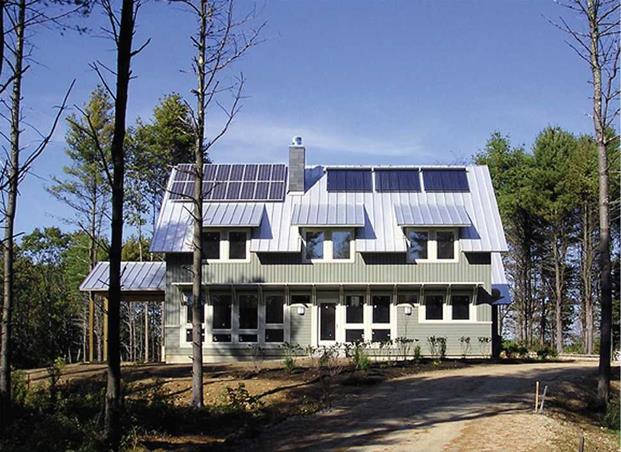 One approach to specifying sustainable products and materials is to become familiar with the criteria for one or more of the programs for certifying residential green buildings. The United States Green Building Council’s LEED for Homes, the National Association of Home Builders’ National Green Building Standards™, and the Natural Resources Canada R-2000 Standard are examples of programs that provide guidelines for certifying homes based on sustainability criteria. In addition, regional and local programs, such as Southface Institute’s Earthcraft House, Canada’s BUILT GREEN®, Earth Advantage Institute’s New Homes, and Austin, Texas’s Austin Energy® Green Building provide similar certification opportunities.
One approach to specifying sustainable products and materials is to become familiar with the criteria for one or more of the programs for certifying residential green buildings. The United States Green Building Council’s LEED for Homes, the National Association of Home Builders’ National Green Building Standards™, and the Natural Resources Canada R-2000 Standard are examples of programs that provide guidelines for certifying homes based on sustainability criteria. In addition, regional and local programs, such as Southface Institute’s Earthcraft House, Canada’s BUILT GREEN®, Earth Advantage Institute’s New Homes, and Austin, Texas’s Austin Energy® Green Building provide similar certification opportunities.
A program that certifies a home as a green building sets criteria for products, materials, and practices that are sustainable. Credit toward certification may be given for features such as water-conserving plumbing fixtures, materials with recycled content, or energy-efficient appliances. Therefore, specifying materials and products that meet national, regional, or local green building program criteria contributes to a project’s sustainability.
As a designer, you may be part of a team that is seeking a green building certification of a home or building. Careful record keeping and documentation will be required. However, you can take pride in your contribution to a more sustainable world. In addition, completion of a certified green building project is a marketable accomplishment and a valuable addition to your portfolio.
LEED for Homes
LEED, or Leadership in Energy and Environmental Design, is a program of the United States Green Building Council. LEED provides building owners and operators with a framework for identifying and implementing practical and measurable green building design, construction, operations, and maintenance solutions.
LEED certification provides independent, third-party verification that a building, home, or community was designed and built using strategies aimed at achieving high performance in key areas of human and environmental health: sustainable site development, water savings, energy efficiency, materials selection, and indoor environmental quality.
LEED-certified buildings are designed to:
• Lower operating costs and increase asset value
• Reduce waste sent to landfills
• Conserve energy and water
• Be healthier and safer for occupants
• Reduce harmful greenhouse gas emissions
• Qualify for tax rebates, zoning allowances, and other incentives in many communities
LEED has multiple rating systems for different situations and buildings. LEED for Homes is targeted to residential buildings (see Figure 3.2).
The Canada Green Building Council provides a version of the LEED program that is adapted for the Canadian climate, construction practices, and regulations (www. cagbc. org).
More information about LEED is available at www. usgbc. org.
|
FIGURE 3.2 A house in Maine, United States, rated as LEED Platinum, the highest level of performance in LEED for Homes certification, Peripitus/ CC-BY-SA-3.0 |

